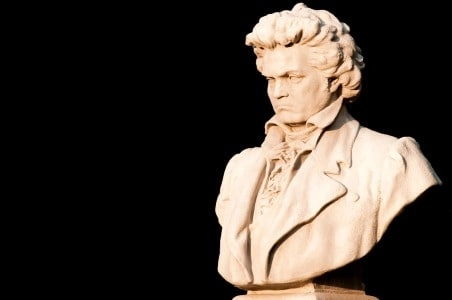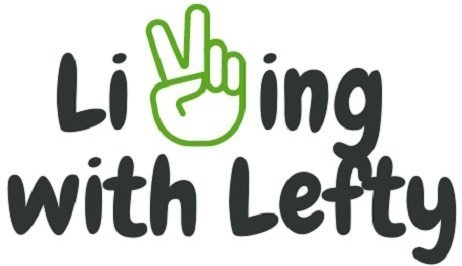Even though left-handers only make up 10-12% of the world population, it seems like they represent quite a high percentage in various visible fields, one of them being music. Of course, you may think there are more famous left-handed stringed instrument players than for other kinds of instruments, but that’s only because their handedness is more obvious if they choose to play a left-handed string instrument. This is less obvious with other instruments, so we tend not to know of them as much. However, there are plenty of other well-known musicians, including famous left handed piano players.
Table of Contents
Are Lefties Good at Piano?
There is no straightforward answer to this question because just being a lefty or righty does not mean you are automatically good or bad at playing the piano. When it comes to instruments such as string instruments, the difference in the challenges faced by both left and right-handed players is much more than the difference faced by different piano players. Due to this, the piano is viewed to be a lefty-friendly instrument.
Are there lefties who are good at piano? Absolutely yes, there are several prominent left-handed musicians that you can look up to, especially to deal with any stereotypes you may come across. Simply put, being left-handed does not equate to being a poor piano player and vice versa.
Famous Left Handed Composers and Piano Players
Imminent personalities in the field such as Bach, Mozart, and Beethoven are all rumored to be left-handed though there is no concrete evidence to prove the same. It is assumed that this lack of clarity is due to the historic unacceptance of left-handedness where children were forced to learn to use their right hand for all tasks, including writing, even if it felt completely unnatural.
Most musicians need to develop a high level of dexterity in both hands, which is perhaps most obvious in piano playing. Therefore, it is logical that naturally left-handed composers and piano players from before the 20th century had developed ambidexterity naturally.
Wolfgang Mozart

Perhaps the most famous example of someone maybe being either left-handed or ambidextrous was Mozart. He was ambidextrous either through sheer brilliance or through necessity because, in his time, everyone had to use their right hand for most tasks. Some historians believe he was a true lefty but most of his compositions feel perfectly ambidextrous.
Ludwig van Beethoven

Anton Schindler, Beethoven’s early biographer, said that he had seen him hold his quill in his left hand while composing, but that he painted with his right hand.
Carl Philipp Emanuel Bach
While most people know of JS Bach, his slightly less famous son, Carl Philipp Emanuel Bach, may have been famous because of what his father, who trained him, wrote in a letter. JS Bach wrote that his son needed to train his right hand to be as good as his left.
Glenn Gould
Another left-handed pianist who became popular as an interpreter of Bach’s works was Glenn Gould. He was known for his creative approach to the pieces and his mastery of counterpoint, which led to him becoming a controversial figure. He would critique the works of composers such as Mozart since he felt that their works did not take advantage of the capacities of one’s left hand.
Sergei Rachmaninov

Up next, we have Sergei Rachmaninov. Rachmaninov was a Russian composer and pianist in the early 1900s who was known for his left-handedness as well as his large hands, which led to the composition of expansive pieces.
Daniel Barenboim
Daniel Barenboim, from Argentina, is another excellent example of a left-handed pianist. He started playing the piano on international tours from the young age of ten years. He is also a conductor and has collected several accolades in the music industry.
Paul Wittgenstein
Another inspirational composer is Paul Wittgenstein. He was not naturally left-handed, but he had no option but to make full use of his left hand after losing his right arm in World War I. He did not let his physical disability stop him from playing the piano. Instead, he used it as fuel to become a better player and composer. His renowned commissions included Ravel’s Piano Concerto for the Left Hand.
In preparation for the commission, Ravel studied several compositions written for one-handed piano playing, including Leopold Godowsky’s 22 left hand only versions of Chopin’s Etudes, which are known to be amongst the most technically difficult pieces of all time, as is evident from the video below.
These examples and plenty others are proof that being left-handed does not pose a huge obstacle when it comes to playing this instrument and, thus, it should not be treated as a drawback.
Is Piano Harder for Lefties?
Before starting to learn an instrument, the primary concern for a lefty would be if they are at a disadvantage right off the bat for simply being left-handed. To answer the question, when it comes to the piano, the results of several studies and the experiences of left-handed piano players point to it not being a substantial disadvantage.
If your left hand is dominant, you may face particular challenges that come with learning to play the piano in the beginning.
The left hand mostly handles the bass and chords, and the right hand controls the melody. Initially, coordination and balancing might prove to be a bigger task for a left-handed player. This is because the seemingly more important part, the melody, is controlled by the right hand. Most pieces focus more on the melody, which keeps your right hand busier than your left.
Initially, you may also find that you play heavier with your left hand, which is a more significant issue while controlling the bass part rather than the melody. You may have to train your right hand to match the strength in your left or tone down the heaviness in your left hand.
Developing a trained ear and devoting time and effort to practice the instrument will help you overcome hurdles such as these. Just like for a left-hander learning the flute, or a left-hander on drums, the piano ultimately requires dexterity in both hands, so there is no additional hurdle for lefties that cannot be solved with practice. Your coordination will improve with time and you’ll be able to play the piano as fluently as a right hander.
In a study conducted by researchers in Germany, music teachers and students, particularly string and piano players, were a part of two experiments that observed their way around the instrument and their sensorimotor skills. This study was done to determine whether being left or right-handed impacted the way the instrument was played and whether there were evident differences in the tendencies of the players.
An interesting observation was that regardless of their dominant hand, years of practice had resulted in every player having more control in their right hand. This could possibly be due to there being so many melody notes to be played in most pieces. The researchers also concluded that while the left-handed players in this study performed well in the standard playing position, it is not necessary that all left-handed players would feel comfortable doing so. For others, the inverted position might prove to be more convenient.
Is There a Left Handed Piano?
Unlike the relative abundance of left-handed guitars, which are essentially mirrored versions of right-handed guitars, a left-handed piano is next to impossible to find out in the wild! Considering how the general consensus is that both lefties and righties face their own set of challenges while learning to play the piano, you would be skeptical to believe the existence of a left-handed piano.
Somewhat surprisingly, they actually do exist, albeit very few in number. The left-handed piano built by Poletti and Tuinman in the late 1990s for Christopher Seed is the first of its kind. It is an inverted version of the standard piano, thus putting the left hand in charge of the melody and the right hand in control of the bass.
Christopher Seed Playing a Left-Handed Piano
Kawai Pianos, piano manufacturers known for their innovative approach to the standard piano, also noted the struggles of the left-handed players. To deal with this problem, they announced the release of a left-handed piano which features reversed piano keys and pedals. Even so, left-handed pianos still come few and far between. If you plan to take up learning the instrument, your best bet would be learning the standard playing position.
